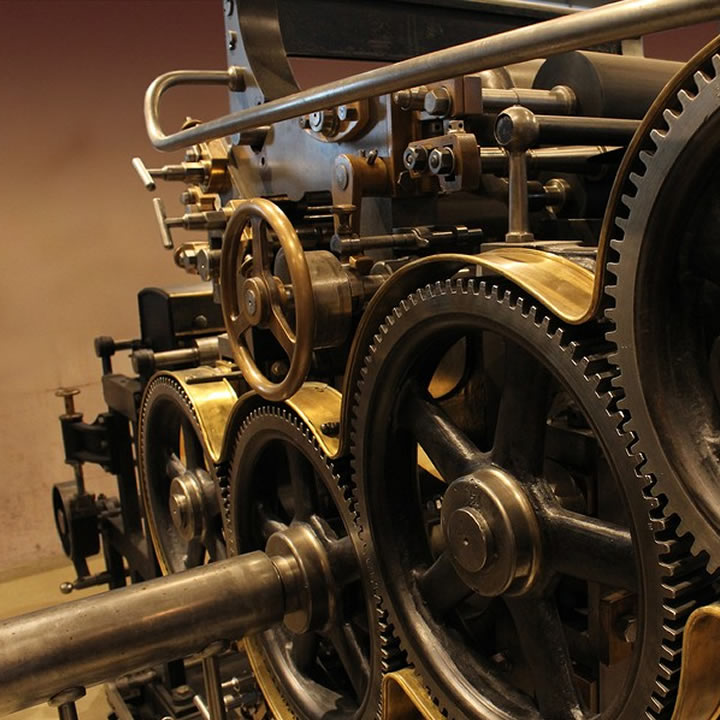Experiencing problems with a machine in a manufacturing facility can be one of the most frustrating things possible.
Not only must you figure out the problem and attempt to fix it, but there’s downtime to contend with while the machine isn’t functioning, as well as money that must be spent on repairs.
If you’ve determined that the machine is non-functional because of a spindle-bearing failure, then it’s necessary to determine why it failed.
Here is an overview of three common reasons for spindle-bearing failure.
1. Damage From the Work Materials
One of the most common reasons for spindle-bearing failure is damage from work material. Sometimes workpieces can be too hard, or they can be irregularly shaped, which results in damage to the spindle bearing.
And, of course, since the spindle bearing is an essential component of the functionality of the machine, if it fails, then the machine can’t be used.
2. Poor Lubrication or Lubrication Problems
Adequately lubricating the spindles is essential for the proper functionality of the spindle bearing. Proper lubrication entails regularly treating the spindles with the correct amount of fluid. Too little lubrication can cause the bearings to seize up, rendering them unable to function.
Adding too much fluid can also cause problems, and excess lubrication can lead to overheating and, subsequently, failure.
Lubrication problems can also cause spindle-bearing failure. If your lubrication fluid is polluted and dirty, failure is also possible. Furthermore, it’s imperative to use the correct type of lubricant. Using the wrong type could cause failure, from seizing up or overheating bearings.
3. Mishandling & and Improper Storage
Storage of your spindle bearing is important, and improperly storing it could damage the component and cause it to fail. Extreme temperature fluctuations, or too-hot or too-cold temperatures, could cause this component to sustain damage and fail.
Spindle bearings are sensitive to excess humidity, as well, because high humidity can result in corrosion. It’s also important to handle the spindle bearing carefully. Dropping or handling the spindle bearings too roughly could cause increased vibration or other damage.
Spindles are very sensitive to too much vibration, so anything that causes them to vibrate too much, such as loose bolts and worn bearings, could cause damage.
Repairing Failed Spindle Bearings
The repair process will depend on the exact cause of the failure. You must also remember that if a spindle has undergone damage too extensive, it may not be repairable. It will be necessary to replace it instead, which could be costly.
To determine the extent of the damage to your spindle, you must carefully inspect it. A trained professional can easily identify the reason for failure by checking for cracks, chips, and other types of damage.
Only then will it be determined whether a spindle bearing can be repaired and what type of repair is necessary.
The spindle bearing must also be disassembled to thoroughly examine the problem for precise diagnosis. This process must be conducted in a sanitary area to prevent contamination. Allowing the spindle bearing’s parts to become contaminated will only cause further damage.
When dismantling the spindle bearing, you will need to take apart the shaft, bearings, and other components. Taking photographs of the parts is also an important part of the examination process.
Once the spindle bearing has been fully dismantled, the various parts must be thoroughly cleaned. Warm, soapy water can be used to clean the parts, or a solvent such as isopropyl alcohol.
No remaining dirt, debris, or pollutants should be present once the cleaning process is over.
The next step that must be completed before you can begin actual repairs is the inspection of the bearings and shaft. This involves thoroughly inspecting all parts, including checking the shaft for proper alignment.
If the shaft isn’t completely straight, it can cause problems with its ability to function.
Once it has been deemed that your spindle bearing is repairable, you can begin the process. Repairing the spindle bearing will require grinding, machining, and other processes that might be necessary.
Once the actual repairs are finished, then another thorough cleaning is necessary. If, on the other hand, the component is too badly damaged, then a replacement will be necessary. This will entail locating an adequate part identical to the original.
The parts should be reassembled once the inspection and cleaning have been completed.
Following reassembly, it must be checked for balance. If not properly balanced, future failures can occur in a short period. A properly balanced spindle bearing will run smoothly and without difficulty.
To ensure proper balance, adding or removing materials might be necessary.
Perform Testing on the Spindle
Performing testing on the spindle is the last step before the spindle can be approved to be used again. This testing must be conducted in a separate area, and multiple loads must be run using the part to ensure it has been completely repaired.
Tests like temperature, speed, and vibration are also steps in the testing process. The spindle bearing must pass all tests to be declared fully functional according to the manufacturer’s specifications.
Unfortunately, spindle failure is a common problem when it comes to CNC and other machines in a manufacturing environment.
However, regular maintenance can keep failures to a minimum to prevent excessive downtime, in addition to the other negative consequences of being unable to use a machine for a period of time.
If you experience a spindle bearing problem, the faster you can diagnose and repair the problem, the faster you can get the machine back in working order.

